Far from the usual city stops and glossy attractions, there are hidden places in Abu Dhabi that few visitors ever find. These quiet corners offer something different from salt lakes in the middle of the desert, ancient forts near the border, to peaceful beaches with barely a soul around. Each spot holds a sense of stillness and surprise, perfect for travellers who enjoy wandering beyond the popular sites. If you’re drawn to offbeat paths and natural beauty, these lesser-known places will show you a side of Abu Dhabi that is calm, wild and real.
11 Hidden Places In Abu Dhabi
From salt lakes to empty dunes, each of these hidden places show a side of the emirate that few take time to see.
1. Al Wathba Salt Lake
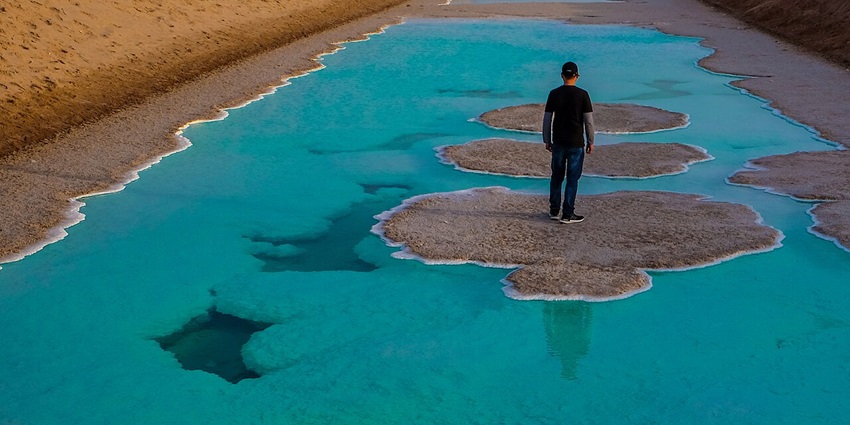
Photo: Ronnie Altising / Wikimedia Commons
Al Wathba Salt Lake lies deep in the desert, around 40 minutes from central Abu Dhabi. Though the pools were made through water pipes running beneath the sand, the place doesn’t feel artificial. Narrow channels of still, green water run between flat salt rims that form white, round steps. These layers build up over time as the salt in the water dries in the heat. The lake has attracted desert birds and sparse vegetation despite the dry setting. Most people come to take photos, but it’s also worth visiting for the calm.
Timings: Best visited between 6 AM – 6 PM
Nearby Attractions: Al Wathba Wetland Reserve, Fossil Dunes
Suggested Read: Places To Visit In Abu Dhabi
2. Al Mirfa Beach
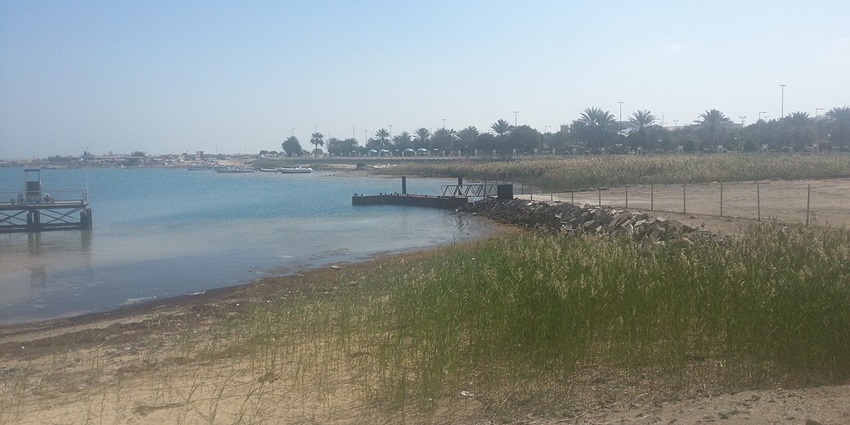
Photo: Rizwan Ullah Wazir / Wikimedia Commons
Al Mirfa Beach is one of the few quiet stretches of coastline left in Abu Dhabi. Found in a small town to the west, it sees more locals than tourists. The beach is wide and open, with soft sand and clear, shallow water. There are no shops or fancy cafés, just the open sea and a quiet road nearby. People often come in the late afternoon to relax. A few old fishing boats lie near the shore, and the sound of water is the only thing you’ll hear.
Timings: 24*7
Nearby Attractions: Al Gharbia Corniche, Mirfa Harbour
3. Bani Yas Church & Monastery
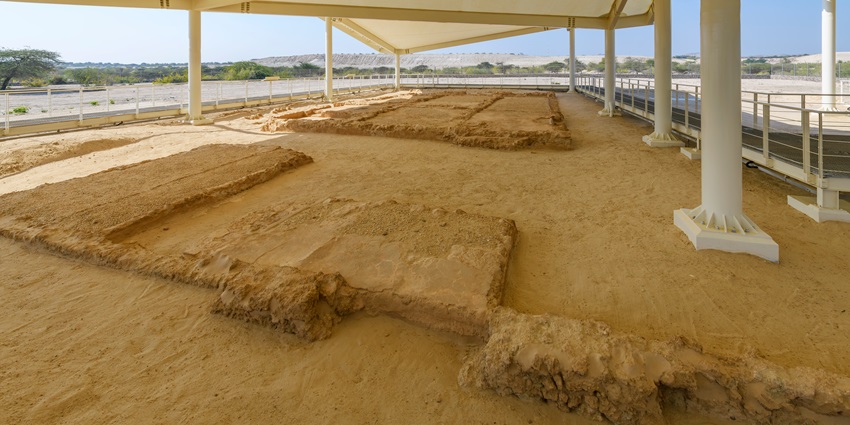
Photo: Kirk Fisher / Shutterstock
Among the most historically significant hidden places in Abu Dhabi, the church and monastery ruins on Sir Bani Yas Island reveal a chapter of the region many overlook. Built between the 7th and 8th centuries, the structure reflects architectural patterns found in early Gulf Christian sites, including plaster crosses and carefully arranged rooms. Excavations uncovered not only religious buildings but also homes, tools, and objects used for fishing, livestock care, and trade. The design shows the site supported a settled community, one connected to maritime routes stretching across the Arabian Gulf.
Timings: 9 AM – 6 PM (as part of guided island tours)
Nearby Attractions: Desert Islands Resort, Arabian Wildlife Park
Suggested Read: Things To Do With Family In Abu Dhabi
4. Mezyad Fort (Al Ain)
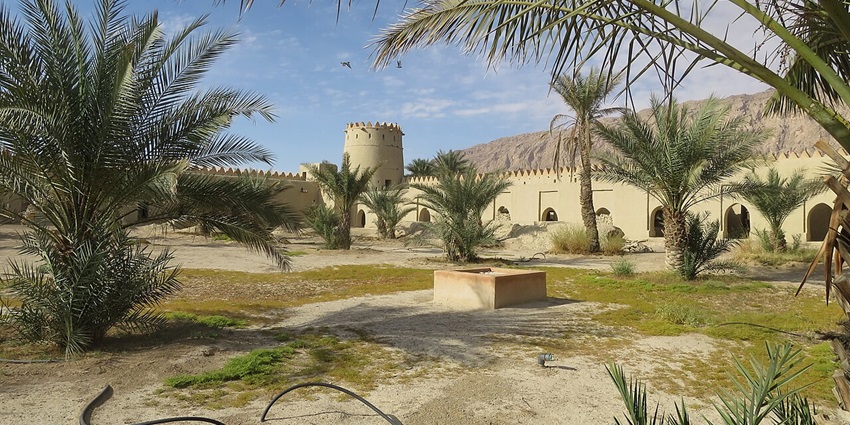
Photo: Angela Manthorpe / Wikimedia Commons
Mezyad Fort stands southwest of Al Ain near the base of Jebel Hafeet. Built in the 19th century, it was a military post protecting the nearby border and was later used by the Trucial Oman Scouts in the 1950s. Its large square layout includes round towers at three corners. The fort was built using mudbrick, stone, and palm trunks, giving it strength and flexibility against the desert climate. Though much of the structure remains original, it was restored in the 1980s and became part of Sheikh Zayed Bin Sultan’s farm.
How To Reach: 2-hour drive from Abu Dhabi, near Al Ain-Oman border
Timings: 9 AM to 5 PM (closed on Mondays)
Nearby Attractions: Jebel Hafeet, Green Mubazzarah
5. Gharbia Dunes (Al Dhafra)
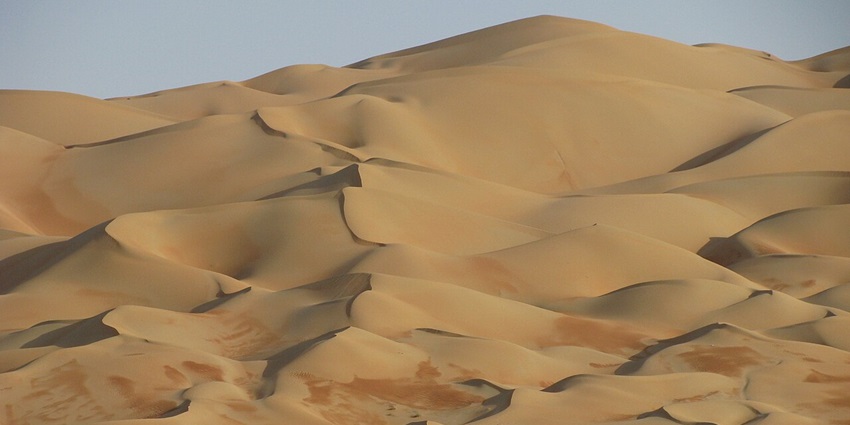
Photo: Peter Dowley / Wikimedia Commons / Image For Representation Only
Gharbia Dunes lie in the far western stretch of Abu Dhabi’s Al Dhafra region and are part of the Rub’ al Khali, or Empty Quarter. This is the largest uninterrupted sand desert in the world. What sets this area apart is the formation of massive dunes shaped by strong shamal winds. Some of the tallest dunes reach over 300 metres in height. Tel Moreeb, one of the highest in the region, is a known site for off-road challenges and annual motorsports festivals. The sand here is fine and reddish-golden, changing shades depending on the time of day.
Timings: Sunrise to sunset recommended
Nearby Attractions: Moreeb Dune, Liwa Oasis
Suggested Read: Things To Do In Abu Dhabi Nightlife To Unveil Fun And Adventure
6. Al Wathba Fossil Dunes
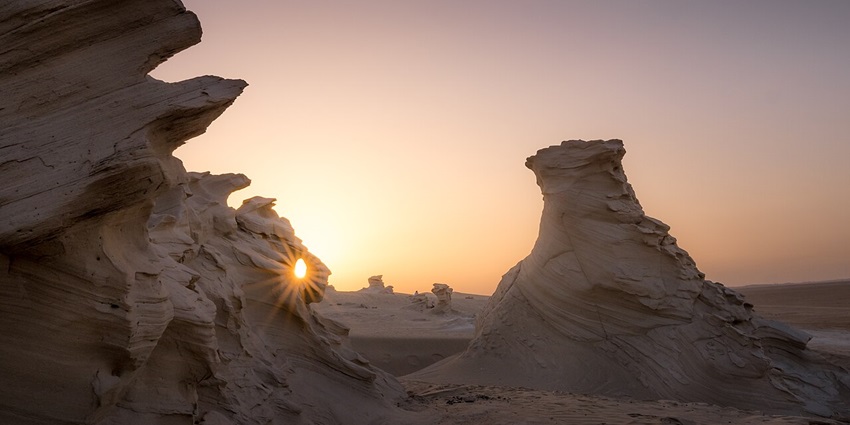
Photo: Florian Kriechbaumer / Wikimedia Commons
Al Wathba Fossil Dunes, found just outside Abu Dhabi, cover more than 7 square kilometres and include over 1,700 individual formations. This makes it one of the largest fossil dune sites in the country. These dunes were shaped by wind, sand, and moisture over thousands of years. Their curved and layered surfaces give a clear record of how desert weather has shaped the land. An open-air amphitheatre hosts shows in the evening, and food trucks are parked nearby on event days. The visitor centre includes a small indoor gallery and viewing platform.
Timings: 8 AM – 10 PM (official site hours)
Nearby Attractions: Al Wathba Wetland Reserve, Al Wathba Salt Lake
7. Hudayriyat Island Trails
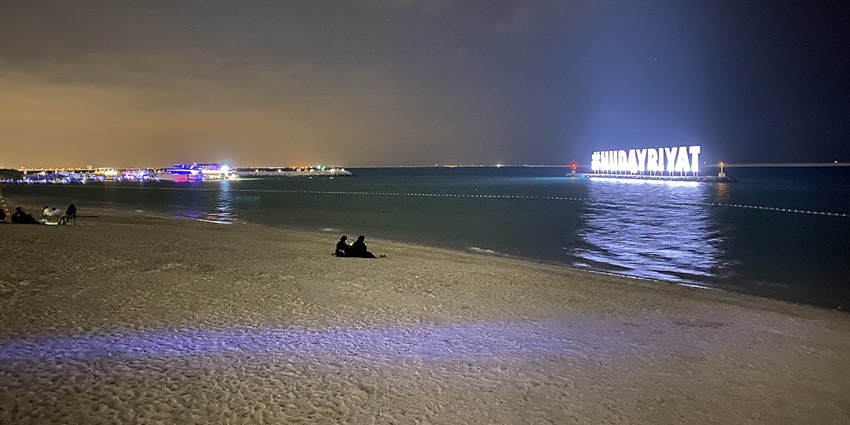
Photo: Slywire / Wikimedia Commons
Hudayriyat Island is best known for its beaches, but tucked behind the waterfront is one of the more unexpected hidden places in Abu Dhabi, its cycling and walking trails. These trails stretch across quiet parts of the island, away from the more developed areas near Marsana. Built on reclaimed coastal land, the network includes a 5 and 10-kilometre loop designed for both amateur cyclists and long-distance riders. Along the way, there are shaded stops, hydration points, and even open workout stations.
Timings: Open all day; best visited early morning or late afternoon.
Nearby Attractions: Marsana waterfront, Hudayriyat Beach, Circuit X skatepark
Suggested Read: Top Stunning And Unique Islands In UAE
8. Qasr Al Muwaiji
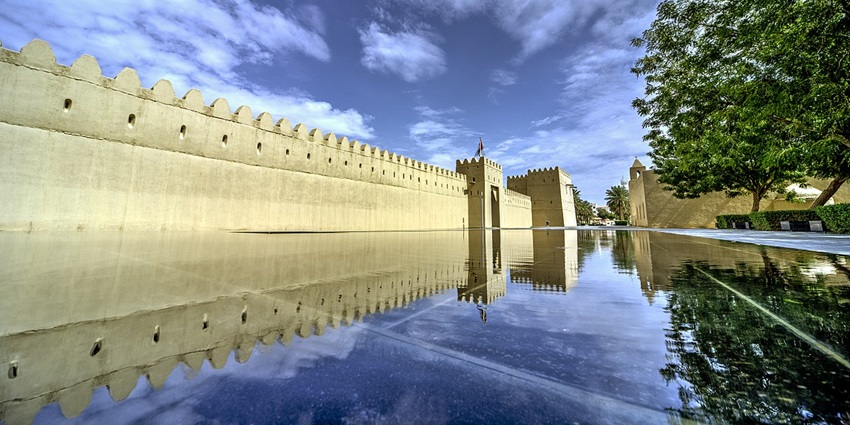
Photo: Michael Peter Glenister / Wikimedia Commons
Qasr Al Muwaiji is one of the lesser-known hidden places in Abu Dhabi, important for its deep connection to the country’s early leadership. The fort, built in the early 1900s later became the home of Sheikh Zayed bin Sultan Al Nahyan while he served as Ruler’s Representative in Al Ain. Its design follows a simple desert fort layout, with a square courtyard, watchtowers at the corners, and a small mosque. The walls are made from mudbrick and supported by palm trunks. Moreover, the area around the fort was once part of a working oasis, with date palms and wells that supported farming.
Timings: 9 AM – 7 PM (Closed Mondays)
Nearby Attractions: Al Jahili Fort, Al Ain National Museum
9. Hili Archaeological Park
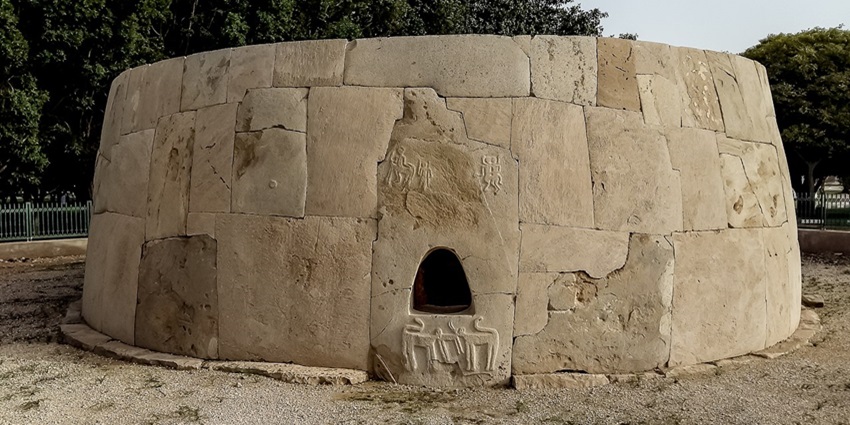
Photo: SUNILKUMAR NAIR / Wikimedia Commons
Hili Archaeological Park stands as one of the oldest and most overlooked hidden places in Abu Dhabi, especially for those interested in ancient civilisations. Located in Al Ain, the site holds remains from the Umm Al Nar period, dating back more than 4,000 years. The circular tomb at the centre, built with carefully placed stone blocks, is one of the best-preserved examples from this era. It once held the remains of dozens of people, showing signs of early community life in the region.
Timings: 4 PM – 10 PM (may vary seasonally)
Nearby Attractions: Hili Fun City, Hili Tower Park
Suggested Read: Abu Dhabi Museums
10. Liwa Oasis
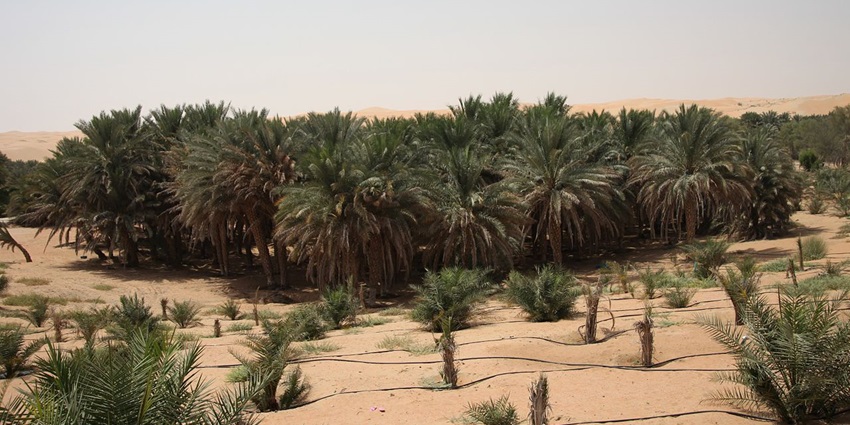
Photo: greeeen2008 / Wikimedia Commons
Liwa Oasis is one of the most remote yet significant hidden places in Abu Dhabi, stretching across the northern edge of the Rub’ al Khali desert. This crescent-shaped region is made up of dozens of small villages, each built around freshwater wells and palm plantations that date back centuries. Many families in the oasis trace their roots to early Bedouin tribes, and here farming still follows old irrigation methods using shallow falaj channels. The area is also known as the birthplace of the ruling Al Nahyan family.
Timings: 24*7
Nearby Attractions: Moreeb Dune, Mezairaa Fort, Liwa Heritage Village
11. Al Wathba Wetland Reserve
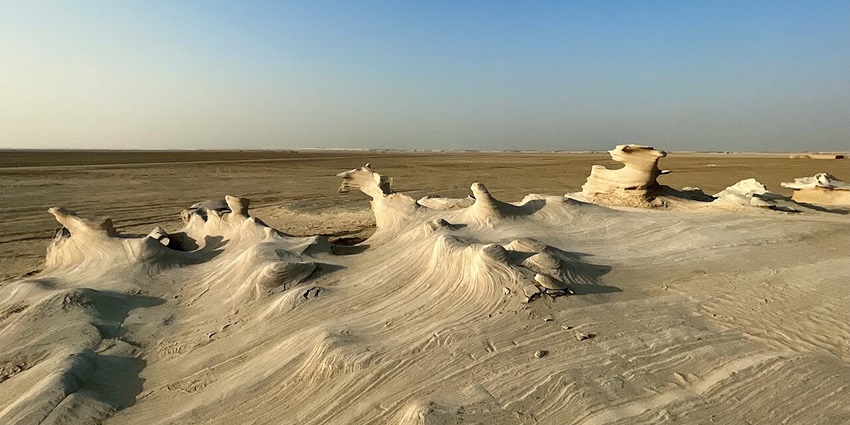
Photo: Mirzasuhail45 / Wikimedia Commons
Al Wathba Wetland Reserve is one of the quietest hidden places in Abu Dhabi, located around 40 minutes from the city. The wetlands began to take shape in the 1980s after treated water collected in a low-lying part of the desert. Over time, the water supported the growth of a new ecosystem. Today, the reserve supports more than 250 different species, including native plants, insects, and birds. Flamingos are the most well-known visitors, arriving in large groups between October and April. Simple wooden walkways stretch through the wetland, keeping visitors on clear paths so the animals and plants remain undisturbed.
Timings: 8 AM – 6 PM, Tuesday to Saturday (closed on Sunday and Monday)
Nearby Attractions: Al Wathba Fossil Dunes, Al Wathba Salt Lake
Suggested Read: Desert Safari Abu Dhabi
The hidden places in Abu Dhabi are quiet and often missed, but they tell stories that the main attractions don’t. These are places shaped by weather, history, and time, desert tracks that lead to forgotten forts, salt lakes that change colour with the light, and wetlands that fill with birds each winter. Let TripXL guide you to the places that stay with you long after the trip ends.
Cover Photo: Nick Fewings / Unsplash


 WhatsApp
WhatsApp
 Twitter
Twitter









